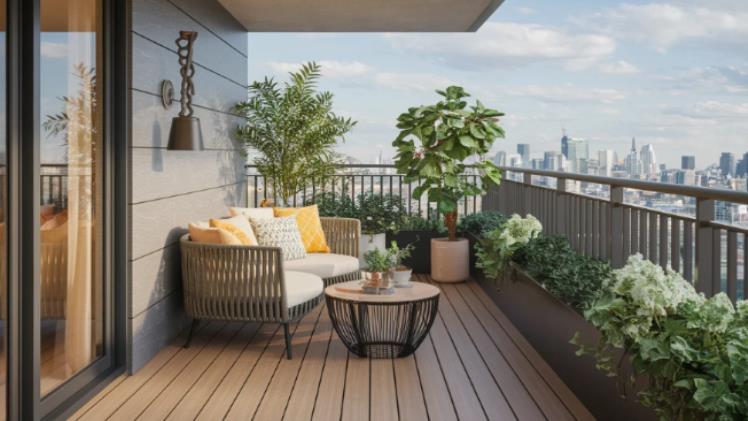Flexible Design Solutions: Curved WPC Panels for Unique Architectural Features

Introduction
Contemporary architecture is all about innovation, and one of the new kids on the design block is flexible WPC Flexiboard panels-Remood. These panels provide architects, designers, and home-owners with a durable material that, while adding to the aesthetic of the area, also adds value and practicality. Unlike rigid surfaces, flexible WPC solutions offer freedom for design and details that can make a curved feature both a signature and focus of residential and commercial endeavors. In this post, we’ll take a look at how these panels are redefining architectural design and discuss why they are rapidly becoming the material of choice for constructing modern spaces.
What’s Special about Flexible WPC Flexiboard Panels?
Conventional wall and cladding materials tend to limit architects to flat, linear forms. However, this restriction is overcome by flexible WPC Flexiboard panels. They are designed with flexible material that can readily conform to curves, arcs, and flowing shapes. This flexibility allows endless possibilities for custom design, such as an S shaped wall, a rounded exterior or whacky interior features that would be cost-prohibitive to create with high-toleranced materials.
With minimal wax or slip additives, SureWood offers freedom of design while still delivering the WPC’s durability and ease-of-maintenance that everyone knows and loves. This fact, combined with the attractive nature of the steel allows them to be used in many decorative features where strength is an issue.
Applications in Modern Architecture
The biggest plus for flexible WPC Flexiboard panels is the flexibility. Here are a few common applications in which the devices are having an impact:
- Curved Walls and Ceilings
These panels, architects can do smooth, continuous surfaces, make the space more three-dimensional, and soft. Whether it’s a sinuous wall in a hotel lobby or a waveshaped ceiling in a shopping center, the end product is as visually appealing as it is practical.
- Unique Facades
The exterior façade is often the starting point for a building’s personality. The flexible WPC boards allow an infinite number of possibilities from organic to circular, from floors to furniture or facades which need to be easy to recognize at first glance.
- Interior Accents
As curved reception desks or feature walls in homes, these panels are great for adding drama. They are very flexible for modern design elements that include an organic shape to any room if you are willing to mix and match materials, colors, and patterns.
- Furniture and Custom Fixtures
Outside of architecture, designers are using flexible WPC Flexiboard panels to create custom furniture, shelving, and art installations. They can be formed in different shapes and the soft panels so they will become an ideal option for structures with artistic features.
Advantages for Using Flexible WPC Flexiboard Panels
- Design Freedom
The most beneficial is freedom in trying out curves and organic forms. Now, creators won’t have to choose between creative design and material constraints.
- Durability
And despite their flexibility, these panels are built to last. They are resistant to moisture, termites and warping so you can use them indoors or outdoors and in wet or dry conditions.
- Sustainability
WPC products, such as Flexiboard panels, are frequently produced using recycled wood and plastic. This green method is attractive to builders and homeowners that want to lessen their environmental impact.
- Easy Installation
Flexible Weight panels are lightweight and easy to install. Builders like how quickly they install, which will save you money on both labor costs and the length of your project.
Why Architects Prefer Flexible WPC Offerings
Architecture is taking to materials that lie somewhere between creative and practical. Unique architectural elements can be made with this condition, and the life cycle durability required for modern structures can be achieved. In an industry in which aesthetics so frequently translate into the value of a space, these panels provide the competitive edge professionals need to create new, imaginative and memorable designs.
For instance, a commercial office can take advantage of a curved lobby wall which promotes traffic direction & invitations while residential projects can solve design problems with gentle curves that mute and soften life inside work spaces. These are also ways that we can bring visual interest in design and more readily accessible areas into the task space.
Future of Architectural Design with Flexible WPC Panels
With the increasing popularity of building products that can be personalized and are sustainable, flexible WPC products will become more and more popular. Their flexibility also suits the trend toward biophilic design—integrating natural forms into man-made structures—and aids in the development of sustainable building practices. We will be seeing more of these panels from the hands of architects currently working on building everything from boutique hotels to custom homes heightening the standard of modern design.
Conclusion
In this day and age of intense competition in the architecture sector, you need to be innovative, creative and you need reliable material. All three categories with the ability to be bent with a visually pleasing product to use which is both sustainable and practical. From curved facades to sculptural interiors, these panels are reinventing the way that architects and designers think about built construction. For the daring and adventurous there are flexible WPC Flexiboard panels-Remood deck solutions that defy convention and fall outside polluting materials.





